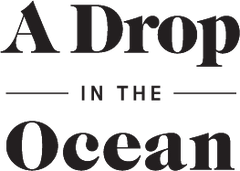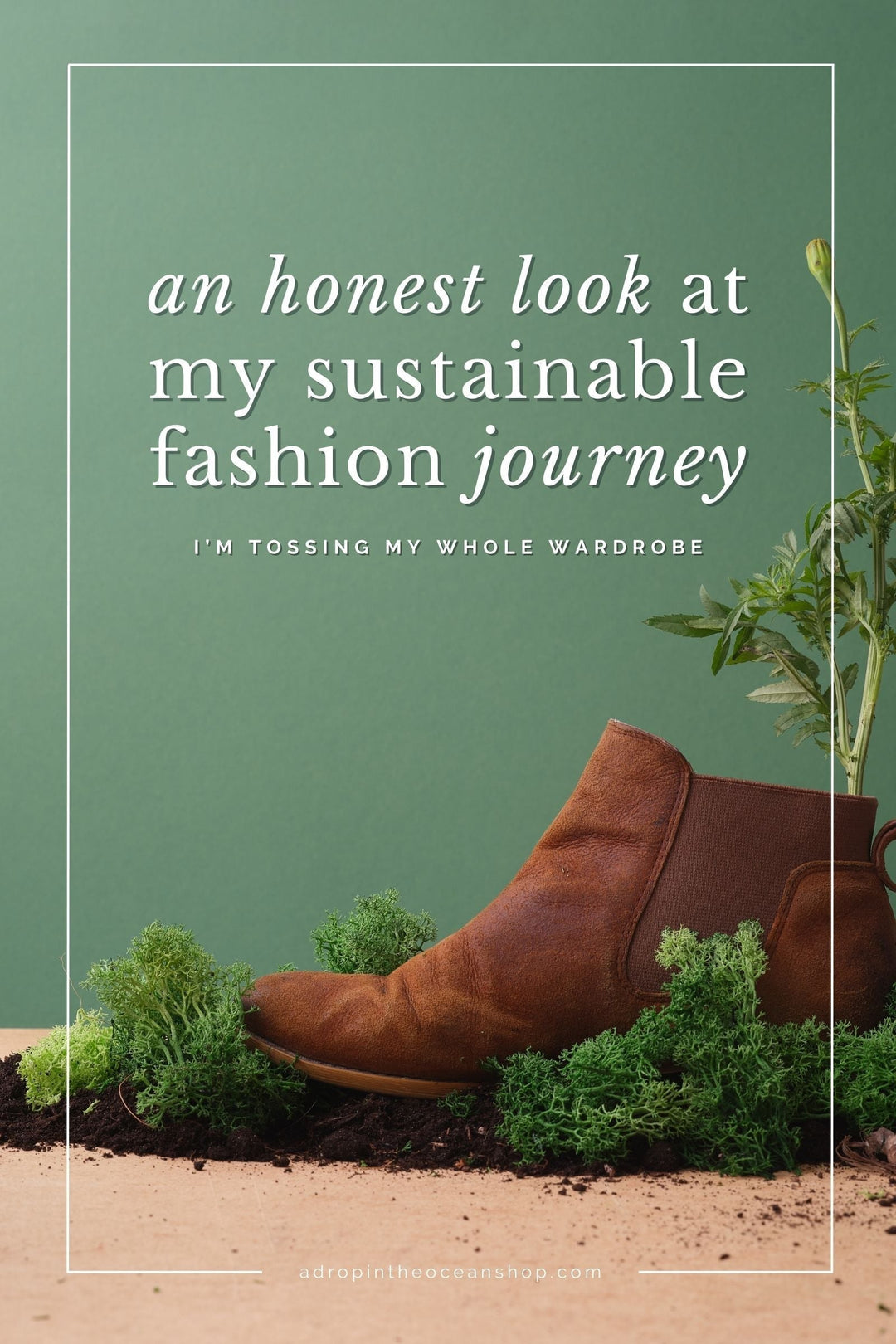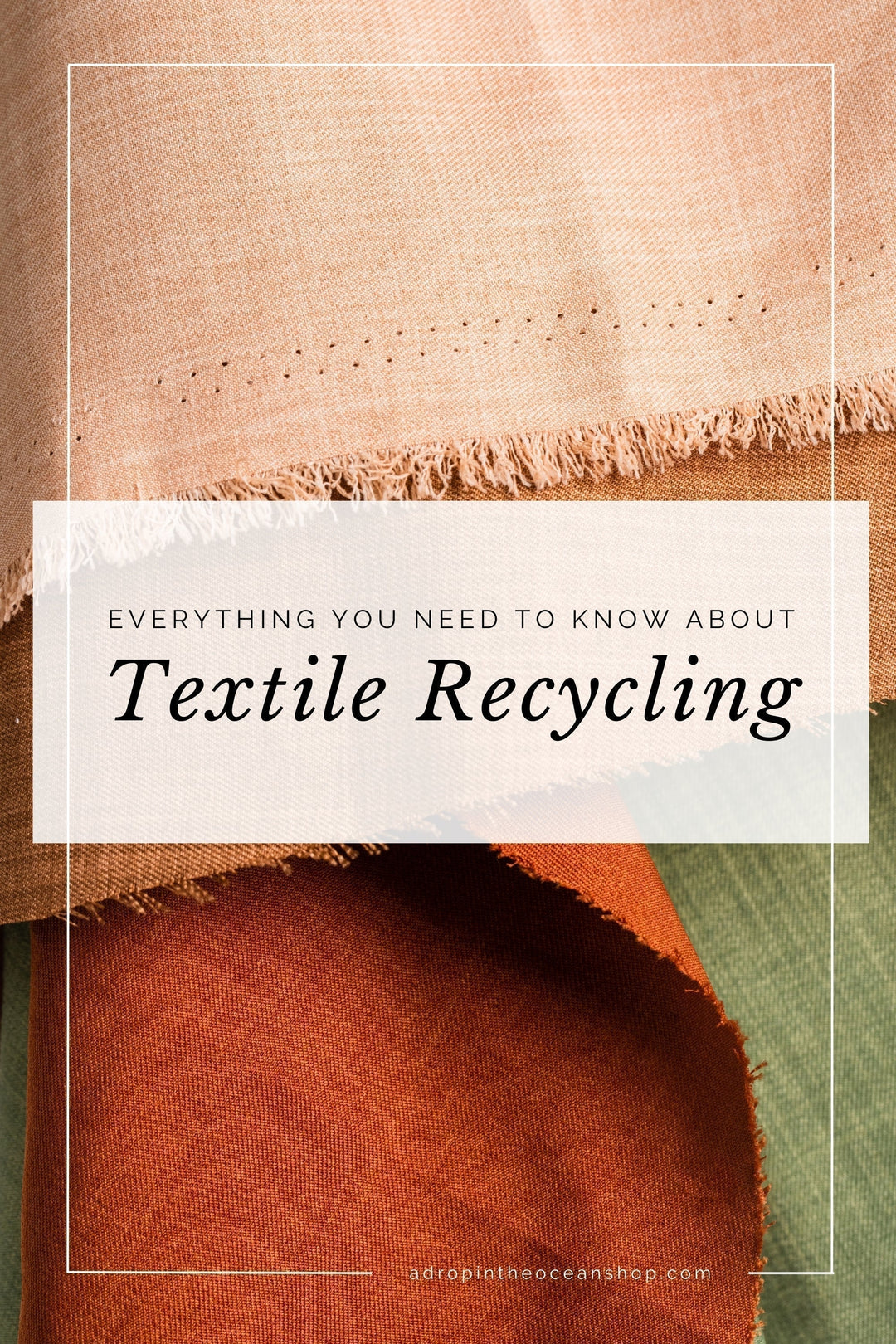22 Sustainability Buzzwords You Need to Know

This post first appeared in our weekly Make Waves Mondays email series on October 3, 2022.
Hey there friend! Happy October! October is a fantastic month around here because October 18th is World Okapi Day! And if you know me, you know that I freaking adore okapi. They’re so stinkin’ cute and don’t get nearly enough appreciation.
And in case you missed it, I’m over here CELEBRATING right now because this year A Drop in the Ocean has partnered with Okapi Conservation Project to develop a brand new, limited release Okapi Conservation Soap - which not only is absolutely adorable but also smells SO FREAKING GOOD.
Our incredible soapmaker has outdone herself with this one. It’s a floraly combo of jasmine and orchid but with some deeper notes reminiscent of the heat and wetness of the rainforest.
Legit, I have a bar sitting next to me right now because I’m so hooked on the scent.

And like I said, it’s limited release so once they’re gone, they’re gone. So go grab a few for yourself and your BFF right now - ‘cause I pinky promise you won’t want to miss this one.
(These gorgeous okapi soaps were a limited-time release in partnership with Okapi Conservation Project. Join our email list to know when they're released again in the future!)
Oh and did I mention that $2 of every bar is going straight to Okapi Conservation Project? 😁 We’ll dive deeper into OCP later this month, too, so you can feel even better about using your dollars for good.
And speaking of using your dollars for good, if you’re part of this EcoWarrior community, it’s pretty safe to assume that when it comes to bringing anything into your home, you want to make sure it’s the most sustainable, most ethical, and most safe for your family.
And, unfortunately, the big marketers know that.
There are so, so many buzzwords surrounding the sustainability space. Some of them are useful, some of them not so much. And it’s incredibly easy for a marketing team to throw out a buzzword or two and call it a day.
Because the well-meaning average consumer doesn’t really know the difference between all these words and research shows that you put a green leaf on a package, people are gonna buy it ‘cause our brains associate that green leaf with “safe,” “sustainable,” “eco-friendly.” It’s a marketing tool.
It’s becoming increasingly difficult to tell the difference between a company that’s actually doing the work of being as sustainable as possible and a company that’s just slapped a green label on the box.
So as we’re coming up on the holiday season and consumerism is about to reach its annual peak, you’re probably gonna start seeing more and more ads for “green” products.
But you’re not an average consumer, friend. You’re a freaking EcoWarrior. 💪
You’re not gonna be bamboozled by a green leaf. You’re gonna be armed with this list of 22 sustainability buzzwords and what they mean so you can make the best decisions for you, for your family, and for the planet - not just this holiday season, but always.
22 Sustainability Buzzwords You Need to Know and What They Mean
1. Recyclable
An item that is recyclable can be broken down and remade into another item.
The term “recyclable” in and of itself, however, can be highly misleading, as an item’s recyclability varies depending on several factors, including the recycling infrastructure in your city - which can vary widely from the next city over.
Recycling an item also doesn’t necessarily mean it’ll be turned into another of that same item again (aka “closed-loop recycling”).
Glass and aluminum are two materials that can easily be 100% recycled. An aluminim can can be recycled and back on grocery store shelves in about 60 days.
If you see the recycling symbol (♻️) on an item, be sure to check the material and if your city accepts that item for recycling.
(And beware the recycling symbol as a whole - it doesn’t always mean that item is recyclable.)
2. Recycled
A recycled product is the end result of a recycling process.
For example, a recycled glass bottle is made from glass that was sent to a recycling facility and turned into a new glass bottle.
This term is often used interchangeably with “reused,” but I believe it’s important to distinguish the two.
At A Drop in the Ocean, nearly all of our shipping materials are reused. They’re collected from friends, family, neighbors, and our own vendors, and used again to ship your orders to you.
However, we do have a couple of recycled shipping boxes that we keep on hand just in case we don’t have enough donated boxes.
These boxes are made from other cardboard boxes that had been used, sent to a recycling center, broken down into pulp, remade into a new cardboard box, and then purchased and shipped to us to use.
There’s energy and emissions associated with recycling. And although recycling cardboard is a super efficient process, it’s still more resources than reusing.
Buying recycled materials is super important in a circular economy, but we also need to make sure we’re using the right terminology.
3. Downcycled
Downcycling (aka “open-loop recycling”), means an item is broken down and turned into a new item of lesser value or quality than the original item.
A downcycled item does not reduce the demand for new, virgin materials.
All plastics are downcycled. A single plastic bottle, for example, cannot be turned into a new plastic bottle at a 1:1 ratio. It will instead be downcycled into something like a park bench or a sweater, which cannot be recycled again at the end of their lives and doesn’t reduce the demand for more plastic bottles.
4. Upcycled
Something that is upcycled was created from what would have otherwise been waste and made into a higher-quality product.
I actually find it quite rare to find truly upcycled things (most things advertised as “upcycled” I’d typically classify as “downcycled”), but one example I do believe in is actually being done by our stainless steel safety razor vendor, Albatross Designs.
Safety razor blades are 100% stainless steel, so they’re a great material for recycling. However, since they’re so sharp, it’s not safe to simply toss them in your curbside recycling bin. Plus, they’re so thin that it would be difficult to recycle them in a completely closed-loop way. So, instead, Albatross will take back your used blades and upcycle them into reusable metal travel utensil sets.
They’re taking a product that’s really only going to last you a couple of months and turning it into a product that will last you decades.
Now that is upcycling.
5. Reusable
Something that is reusable can be used again and again before it reaches the end of its life.
Ideally, this would directly replace something disposable in your life.
For example, wool dryer balls are a reusable alternative to disposable dryer sheets.
Sometimes reusable can also be in reference to something like a glass jar.
Many companies with products that come in glass jars will use the “reusable” angle to promote the sustainability of their products (as opposed to a plastic tub). But there are only so many glass jars a person can use before they take over your cabinet and gotta start being tossed!
Reusable doesn’t always mean less waste.
6. Refillable
Refillable products come in packaging that is intended to be filled with the same product over and over again without creating additional waste.
At A Drop in the Ocean, our refillable products come in returnable packaging, so there’s quite literally zero waste involved in the refill process.
When you get a refill jar or bottle from us, you’ll just send us back the empty one - at no cost to you - so that we can wash and refill the jar or bottle.
Some companies offer their refillable products in plastic pouches, intended to be transferred into a reusable jar or bottle. This option still creates unrecyclable and plastic waste, but can have a lower carbon footprint from the shipping process.
As I mentioned before, there is no black-and-white solution to sustainability, but it’s important to be aware of how these words can be used in different ways.
7. Biodegradable
A biodegradable material will fully decompose naturally in nature, when there are bacteria and microorganisms present, over an unlimited amount of time.
A piece of paper or a banana peel are examples of biodegradable materials.
It’s important to note that while a banana peel will biodegrade pretty darn quickly in some backyard soil, it won’t behave the same in a landfill.
Landfills are intentionally designed to be tightly packed waste storage facilities.
Without oxygen or water, there’s little to no microorganisms present to do the work of biodegradation in a landfill - meaning that banana peel is actually going to mummify, rather than biodegrade 🤯
8. Bioplastic
The term “bioplastic” typically refers to a plastic-like material that is either made from plant materials (such as corn starch) or contains an additive that helps the plastic break down.
Bioplastics are not necessarily biodegradable or compostable.
A bioplastic cup made from corn starch (aka a polylactic acid, or PLA, cup) ends up in the ocean, it will not biodegrade.
9. Compostable
A compostable material will fully biodegrade into its natural components, but it requires specific conditions to do so.
To be certified compostable, an item must fully biodegrade in a compost setting within 90 days.
A compostable item can either be home compostable or industrially compostable.
Home compostable items can be tossed in a backyard compost bin and as long as the bin is properly maintained, will fully break down into humus, a nutrient-dense soil additive.
Food scraps, pizza boxes, and yard waste are a few examples of things that are home compostable.
Industrially compostable items will not break down in a home compost system.
These items require high levels of heat (around 140°F) that cannot be reached in home systems. These are things like certified compostable plastics, meat scraps, and dairy products.
But like recycling, it’s important to confirm what’s accepted by your city’s composting facility before tossing something in!
10. Plant-Based
Plant-based is another buzzword often thrown around for bioplastics.
If something is labeled as “plant-based,” look for additional information on what exactly that means.
Is it certified?
Has it been tested by a third party?
How is it properly disposed of?
Is it biodegradable or compostable?
11. Carbon Neutral
When something is carbon neutral, its carbon emissions and carbon absorption are completely balanced - meaning there are no net emissions associated with that thing.
A product can be carbon neutral, a service can be carbon netural, an individual person can be carbon neutral, or a company as a whole can be carbon neutral.
Typically, carbon neutrality is achieved through something like tree planting or supporting organizations like Carbon Lighthouse Association that purchases carbon allowances and holds them forever, preemptively eliminating emissions from polluting corporations before they even happen.
Carbon neutral is a great step towards sustainability, but it is not the ultimate solution. If a company is not taking steps to first reduce their emissions, offsetting their emissions is like slapping a band-aid on the problem.
At A Drop in the Ocean, our shipping practices are carbon neutral, and often carbon negative.
12. Carbon Negative
If you take carbon neutral one step further and have higher carbon absorption than emissions, you reach carbon negative territory.
13. Carbon Offset
The tree planting and supporting Carbon Lighthouse Association scenarios are examples of carbon offsets. Basically, it’s the things companies or individuals can do to “cancel out” their carbon emissions.
14. Plastic Offset
Similar to carbon offsetting, plastic offsetting is paying another organization to clean up the same amount of plastic produced by a company in order to “cancel out” the plastic that company has produced.
Just like with carbon neutrality, plastic neutrality is a step in the right direction, but not a solution.
If the company is not first taking action to reduce their use of plastics, offsetting ther plastic is like a band-aid on the problem of plastic pollution.
15. Organic
Organic certification typically relates to foods. Organic produce are grown without the use of synthetic fertilizers or pesticides (although some synthetic fertilizers are allowed under this certification), and animals are raised in ways that accommodate their natural behaviors, are not given hormones or antibiotics, and their food is also organic.
16. Green / Eco-Friendly / Planet-Safe
These are the ultimate vague buzzwords. There’s no regulation around them and ultimately have zero meaning.
If something is labeled as any of these words, do some digging to find out what actually makes that product or company “green,” “eco-friendly,” or “planet-safe.”
At A Drop in the Ocean, we do use these terms sometimes, even though I really do hate them. But as a small business that’s trying our damndest to make waves in the world, we first need to get our products seen! And these are often times the words people are using to search for a product. But I will ~always~ back these terms up with more details than you probably even want about what makes our products eco-friendly.
17. Natural
“Natural” typically refers to something that contains nothing synthetic or artificial. But, unfortunately, like “green” and “eco-friendly,” there’s no regulation around the term, so it’s typically used in vague ways with no real meaning.
Always look for additional information on what makes something “natural,” such as vegan, organic, or free of preservatives.
18. Vegan
A vegan product does not contain any ingredients or materials derived from animals. This includes meat products, leather, feathers, honey, beeswax, and more.
19. Sustainable
Sustainable is another buzzword that can be super vague and meaningless. It’s one of the easier ones for a company to use without backing it up.
But, “sustainable” can also mean just in general that something is done or made in a way that does not deplete natural resources or impact the environment in detrimental ways.
Like with green, eco-friendly, planet-safe, and other words like these, be sure to look further into what makes that product or company “sustainable” before making any decisions to buy.
There are no black-and-white solutions, but the more sustainable a company is, the more they’re going to want to shout it from the rooftops - and give you alllll the dirty details about how they’re doing it.
20. Zero Waste
“Zero waste” can either refer to a product or company’s practices that result in nothing going to landfill, or to the zero waste lifestyle aimed at individuals producing no landfill trash.
Typically, zero waste products will be package free or in returnable packaging. In the zero waste movement, the goal is to create as little trash as possible, including recycling and compost, so reusable, refillable, or unpackaged items are queen here.
However, the term can also be used to mean that the packaging is recyclable or compostable.
Ultimately, the end goal of “zero waste” is to build a circular economy.
21. Circular Economy
In a circular economy, nothing goes to waste.
We are currently operating in a linear economy, or a take, make, waste economy. We are extracting resources from the earth, making and using products from those resources, and then throwing those products away.
In a circular economy, waste is a design flaw. It’s eliminated before it happens.

22. Greenwashing
And last but absolutely not least, my favorite topic… Greenwashing.
Without getting onto my typical greenwashing soapbox, greenwashing is what happens when a company spends more time and more money making you THINK they’re doing something good for the planet than they spend ACTUALLY doing something good for the planet.
It’s a marketing tool targeting EcoWarriors who want to do good but don’t know where to start or don’t know the confusing nature of sustainability (not you, my friend).
Because it’s one of my favorite things to talk about, we’ve got a whole category dedicated to it over on the A Drop in the Ocean blog, so definitely go give those posts a read, too. Otherwise this would turn into a much longer post - and I think we've already crossed the "too long" threshold here😅
—
*Phew!* Okay, I think I got them all, friend.
If I missed any that you’ve been curious about, will you do me a favor and comment below to let me know?
And even if I didn’t miss any for you, I’d still love to chat! I wanna know what you thought of this one. Was it helpful? Did you know it all already? Did anything surprise you? Let me know!
Related:
Recycling vs. Composting: Which is more sustainable?
What is "green hushing"?









Leave a comment